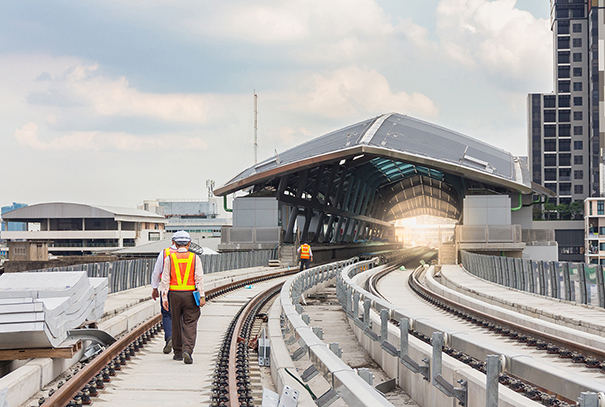
Demand for space and convenience
Modern homeowners demand transport convenience. Developers often market their properties as ‘a short walk to’ or a ‘number of minutes from’ the nearest railway station because this factor is of increasing importance for prospective buyers. A recent CBRE study found that houses within 500 metres of a London tube station experienced value growth of nearly 10% every year since the financial crash, versus on average 6.9% for all other housing stock in the borough.1
Coupled with this, the UK’s population growth over the past decade has created an ever increasing demand for space to build new homes and workplaces. The government recently stated its ambition to meet this demand by delivering 300,000 extra homes per annum by the mid-2020s and with heavily regulated planning policies applying to greenfield sites, the focus is on making better use of existing brownfield development opportunities within our towns and cities. With space at a premium, part of the solution is to ramp up development near, adjacent or above operational railway lines.2
Alongside increased demand for development sites, the government continues to commit significant investment to its rail infrastructure, both through extensions to existing networks such as the planned Thameslink station in Brent Cross, and entirely new lines such as Crossrail and the long mooted East West Railway linking Cambridge with Oxford. This expanded footprint of rail infrastructure means more development in proximity to its component assets.
What does this mean for developers?
Whilst there is an unquestionable need to make effective use of this land, developments near railways do give rise to additional risks, particularly during the construction phase of a project.
Where a development has a risk of causing disruption to rail infrastructure owned by Network Rail, London Underground or Transport for London, it is considered within the ‘zone of influence’, meaning that the developer is likely to be obliged to enter into an Asset Protection Agreement (APA) with these parties. The APA requires the developer to indemnify the beneficiary for losses associated with any disruption or delay caused to the network, even where this occurs in the absence of physical damage for example a tower crane teetering in the wind, or smoke across the line.
In these circumstances, it is only right that the infrastructure owner is reimbursed for their loss of use and they will have their own contractual responsibility to compensate the train operating companies for unplanned disruption to the network. From a Network Rail perspective, this is governed by schedule 8 of the track access contract.
The developer may retain the risk imposed by the APA themselves or seek to pass it down, in part or in its entirety, to their main contractor. Either way, without careful consideration the APA can impose a significant exposure on these parties.
Under a typical Third Party Liability policy, cover is limited to liability arising from third party property damage and the consequential financial losses which flow directly from that damage. However, the policy will not usually cover pure financial loss, i.e. contractually assumed liability for loss of use of a train line or station because of unsafe conditions adjacent to that property.
Insurance solution
In recent years, the construction insurance market has responded to this coverage gap by developing a product known as Contractual Financial Loss (CFL) insurance. The Australian insurer, QBE, have been leading the way in this area, having produced their own Rail CFL wording:
“QBE saw this as a key area of uninsured exposure for our clients, so we developed our CFL wording that clearly sets out what is covered to avoid the gap in insurance. As a result we have seen a significant increase in the number of policies purchased over the past couple of years; and we have worked with Gallagher to deliver solutions for complex projects, both on and adjacent to Network Rail assets.”
While this coverage can be effective in meeting the policyholder’s liability for non-damage losses, a comprehensive insurance solution can only be achieved following a review of the contractual documentation by a qualified broker. In circumstances where an APA applies, Gallagher therefore recommends consulting your insurance advisor at the earliest possible opportunity.
1. https://www.cbreresidential.com/uk/en-GB/content/mind-gap-how-living-near-tube-station-affects-house-price-growth
2. http://researchbriefings.files.parliament.uk/documents/CDP-2019-0147/CDP-2019-0147.pdf


